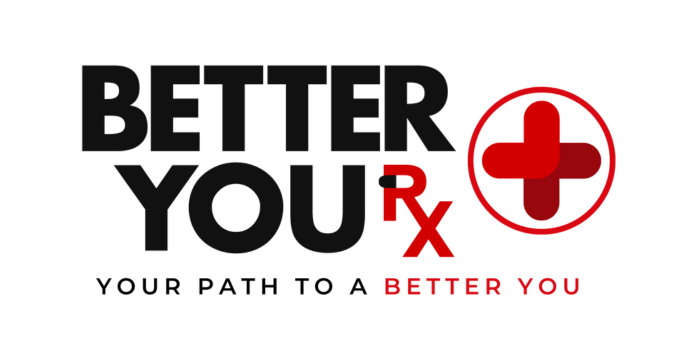Welcome to Better Your RX, your trusted source for health-related information and resources. In this article, we delve into subcutaneous fat—what it is, how it differs from other types of fat, its importance in the body, and strategies to manage it for a healthier lifestyle. We also briefly touch upon our brand, Better You RX, and the option of purchasing medicines from Canada to the US. Let’s explore the fascinating world of subcutaneous fat and gain insights into effective weight management.
What is Subcutaneous Fat?
Subcutaneous fat refers to the layer of soft fat that is found just beneath the skin throughout the body. It is the type of fat that you can easily pinch. While everyone has subcutaneous fat, the amount varies among individuals. Factors such as genetics, diet, and exercise can influence the accumulation of subcutaneous fat. In cases where a sedentary lifestyle and poor dietary habits lead to excess calories, subcutaneous fat can become more prevalent.
Subcutaneous vs. Visceral Fat: The Differences
There are significant differences between subcutaneous and visceral fat in their composition and distribution within the body. Subcutaneous fat is soft and loose, located directly beneath the skin. It can be felt when you “pinch an inch” around areas like the belly. On the other hand, visceral fat is firmer and resides deep within the abdominal cavity, and surrounding organs such as the liver and intestines. While both types of fat pose potential health risks, visceral fat carries a higher risk due to its proximity to vital organs.
- Location and Texture
Subcutaneous fat predominantly surrounds men’s abdomen and shoulders and women’s thighs, buttocks, and hips. Visceral fat, however, resides in the spaces around the liver, intestines, and other organs.
The Purpose of Subcutaneous Fat
Beyond its role in shaping our body contours, subcutaneous fat serves several essential functions:
- Energy and Fat Storage
Subcutaneous fat acts as an energy reserve, fueling the body when needed. It is utilized after the carbohydrate energy has been consumed, thereby triggering weight loss.
- Temperature Insulation
This layer of fat functions as insulation, protecting the body from extreme temperatures. It helps maintain a stable internal temperature, safeguarding against hypothermia and hyperthermia.
- Protection from Trauma
The cushioning effect of subcutaneous fat provides protection to underlying muscles, bones, organs, and delicate tissues, minimizing the risk of injury during physical trauma.
- Biological Benefits
Subcutaneous fat is not solely a passive energy store. It produces the hormone leptin, which helps regulate hunger and fullness and controls appetite. It also produces the sex hormone estrogen.
- Inflammation Reduction
Research suggests that subcutaneous fat may possess protective endocrine and inflammatory characteristics. This may explain why some individuals with obesity exhibit metabolic health despite carrying excess weight.
Health Risks of Subcutaneous vs. Visceral Fat
While subcutaneous fat benefits, excessive accumulation can lead to various health problems. These can include insulin resistance, fatty liver disease, metabolic syndrome, and hypertension. Visceral fat, however, carries a higher risk due to molecular-level differences, making it more strongly associated with metabolic issues and an increased risk of death, even among individuals with a normal BMI.
High Subcutaneous/Visceral Fat Ratio: Causes and Measurement
The natural ratio of subcutaneous to visceral fat in the body is generally high. However, various factors can influence this ratio. For instance, women tend to have more subcutaneous fat than men, particularly during adolescence. Aging also leads to an increase in both types of fat, with a greater rise in visceral fat. Imaging techniques such as CT scans, MRIs, and other measurement methods like DEXA can accurately determine the subcutaneous to visceral fat ratio, helping healthcare providers assess potential health risks.
Strategies for Losing Subcutaneous Fat
To effectively reduce subcutaneous fat, adopting a healthy lifestyle is key. This involves a combination of a balanced, calorie-conscious diet and regular exercise. While genetics may influence subcutaneous fat mass, research suggests that high physical activity can counteract genetic predisposition. Consider the following strategies for effective fat loss:
Lifestyle Changes
- Avoid processed foods, baked goods, and fast food typically containing inflammatory, unhealthy fats.
- Read labels to identify and avoid products with sodium, trans fats, high-fructose corn syrup, and excessive sugar and calorie content.
- Stay hydrated by drinking 6 to 8 cups of water daily, and increase intake when exercising or in hot weather.
- Prioritize getting quality sleep to support appetite regulation and weight management.
- Manage stress levels, as heightened stress can disrupt hormonal balance and lead to unhealthy food cravings.
Exercise Regimen
- Engage in at least 30 minutes of high-intensity cardio exercises several times a week to promote overall fat burning.
- Consider high-intensity interval training (HIIT), a time-efficient workout method that boosts metabolism and fat-burning potential.
- Include strength-training exercises in your routine to increase muscle mass and metabolism.
- Incorporate aerobic activities like running, cycling, swimming, and brisk walking to burn calories and enhance cardiovascular health.
It’s important to note that losing subcutaneous fat requires patience and persistence. Each individual’s weight loss journey is unique and influenced by genetics, age, hormones, and body composition. Results may vary, but a combination of calorie deficit, physical activity, and healthy habits can yield positive changes within a few weeks to several months.
The Bottom Line
Learn how to travel with Saxenda while managing weight effectively. Trust Better You RX for your health journey to a better, healthier you. By understanding its characteristics and implementing healthy lifestyle choices, we can effectively manage our weight and improve overall well-being. Remember, achieving sustainable weight loss is a gradual process that requires commitment and consistency. With Better You RX as your trusted health partner, you can take charge of your health and embark on a journey towards a better, healthier you.



